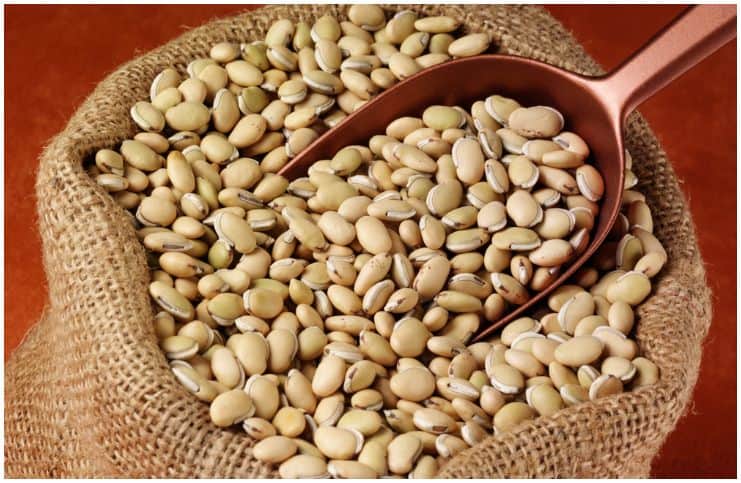Hyacinth Beans (Lablab Purpureus) – Side Effects & Health Benefits:
Facts
Lablab purpureus is a species of bean in the family Fabaceae, commonly known as the bean or legume family, and is the 3rd-largest land plant family in terms of the number of species.
The Hyacinth beans are also known as Indian beans, papaya bean, Australia pea, henzu, dolichos bean, tonga bean, calavance and Egyptian beans around the globe.
The plant is vigorous in warm climates and is usually grown along fences and trellis in the Orient.
Bean pods are slightly curved and thin, that should be harvested for vegetable use when young. The leaves, roots, seeds, pods, and flowers of tonga bean are all edible.
There are 4 varieties of Lablab beans such as:
- White flower;
- Asia purple;
- Purple flower;
- Asia white.
Uses
This plant is used to make salads, curries, and is also used as a flavoring agent. In addition, the bean can also be prepared as ”tofu” or be fermented into ”tempeh” in the same way that soya beans are used in Japan.
Also, the leaves of the plant are used in food just like spinach.
In Chinese traditional medicine, the flowers of lablab bean are used against alcoholism and as a treatment for irregular menstrual periods. Furthermore, the beans are used for stomach problems, fevers, aphrodisiac, and as an antispasmodic.
Nutrition facts
The leaves are more than 28 percent protein, 12 percent dietary fiber, 7 percent fat (1% saturated fat), and minerals. The seeds contain water, carbohydrates, protein, fat, dietary fiber, ash, carotene, calcium, copper, phosphorus, magnesium, iron, zinc, pantothenic acid, and vitamin C.
Health benefits of Hyacinth beans (Lablab purpureus)
Reduces bad cholesterol
Did you know that for every 10 percent drop in your cholesterol level, your heart attack risk drops by 20 percent to 30 percent?
Consuming this herb helps minimize your bad cholesterol levels substantially and prevent the health troubles resulting from high levels of LDL cholesterol.
Weight loss
These beans are an important source of fiber.
The fiber of this bean is the non-cellulose type of polysaccharide (complex carbohydrates), and these polysaccharides bind with water, which gives an individual eating it a stomach fullness sensation. Therefore, it is very helpful in losing extra weight.
Lactation
The leaves and seeds of the plant are highly beneficial for improving lactation in new mothers. More importantly, during lactation, you should make sure you are drinking at least 64 ounces of water a day and resting adequately.
Cholera
The stem of lablab purpureus can be used to treat cholera. Cholera is an infectious disease that causes severe watery diarrhea, which can lead to dehydration and even death if untreated. Symptoms like vomiting and nausea can be reduced with the help of these beans.
A good potassium source
Potassium is one of the most important minerals in the human body. Potassium’s main functions in the physical body include controlling the electrical activity of the heart and other muscles and regulating fluid balance.
According to the Institute of Medicine, we need about 4,700 milligrams of potassium every day, however, the majority of Americans only ingest half that amount.
For example, the risk of ischemic stroke is lower in high-potassium consumers. Therefore, whether you’re trying to keep your muscles healthy for life or just trying to build lean muscle mass, this essential mineral plays an important role.
1 cup of these beans contains 15 percent of the recommended daily intake of potassium.
Side effects Of Hyacinth Beans (Lablab Purpureus)
Mature or dry beans must not be consumed raw. They have to be cooked. This means soaking overnight, then boiling them a long time in a lot of water. Otherwise, they are toxic due to the presence of cyanogenic glycosides, that are converted to hydrogen cyanide when consumed.
Additionally, individuals suffering from rare blood disorders should not eat this herb since it may harm their internal organs. These beans may cause a gas problem if consumed in a large quantity and not cooked properly.
Lablab beans curry recipe
Ingredients
- 150 gms of lablab beans;
- 1 medium-sized chopped tomato;
- 2 chopped onions;
- 1-4 tbsp of turmeric powder;
- 2 green chilies;
- 3 tbsp of grated coconut;
- 1 tbsp of mustard seeds;
- coriander leaves;
- 3 tbsp of tamarind extract;
- 2 tbsp of oil;
- 1 tbsp of coriander powder;
- salt.
Instructions
Cook the beans for 3 to 4 whistles and keep it aside. Grind coconut to a fine paste and put it aside. Heat oil in a heavy-bottomed vessel, add mustard seeds and coriander leaves to it, and allow it to splutter. Add onions and fry till it turns into a golden color. Add tomatoes to it and cook for around three minutes.
Then add the cooked beans and a little water to the mixture prepared above. After, add chilly powder, coriander powder, turmeric powder, tamarind extract, and a little salt to the mixture.
Mix it well and simmer for five minutes. Finally, add coconut paste and cook for 1 minute or till the gravy becomes thick. Bon appetit!
READ THIS NEXT:
Pickled Mustard Seeds (Black, Brown, Yellow) – Side Effects
Angelica Archangelica: side effects
Reference


